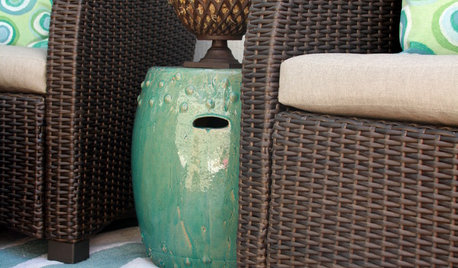Are our aplliance manufacturers growing more stupid over time?
joyfulguy
17 years ago
Related Stories

LIFEYou Said It: ‘What Will You Grow?’ and More Houzz Quotables
Design advice, inspiration and observations that struck a chord this week
Full Story
WINTER GARDENINGExtend Your Growing Season With a Cold Frame in the Garden
If the sun's shining, it might be time to sow seeds under glass to transplant or harvest
Full Story
COLORBedroom Color: The Secret to More Sex and More Sleep
Look to surprising revelations about bedroom wall colors to get more of what you want
Full Story
EDIBLE GARDENSHow to Grow 10 Favorite Fruit Trees at Home
Plant a mini orchard in fall, winter or early spring to enjoy fresh-off-the-tree fruit the following year
Full Story
ECLECTIC HOMESHouzz Tour: New Mexico House Grows With a Designing Family
A builder and a decorator settle down on a mesa property and create a warm home filled with their favorite things
Full Story
GREEN BUILDINGGreen Grows Up: The Many Faces of Today's LEED Homes
While LEED-certified homes have some common characteristics, the rest is up to your imagination
Full Story
NURSERY IDEASHow to Decorate a Nursery to Grow With Your Baby
A neutral palette, convertible furniture and classic patterns mean you won't have to redecorate for the phases of childhood
Full Story
FARM YOUR YARDHow to Grow Vegetables in Containers
Get glorious vegetables and fruits on your patio with a pro’s guidance — including his personal recipe for potting mix
Full Story
BUDGET DECORATING13 Versatile Furniture Pieces That Grow With You
Build a collection of high-quality pieces that will work from that first solo rental to a long-term home
Full Story
MOST POPULARSummer Crops: How to Grow Sunflowers
Savor snack-tastic sunflower seeds once the radiant blooms have faded — if the birds have saved you any, that is
Full StorySponsored
Leading Interior Designers in Columbus, Ohio & Ponte Vedra, Florida



jrdwyer
jannie
Related Discussions
growing watermelons for the first time
Q
Stupid, Stupid Weather!
Q
Stupid first time winter sower.
Q
The Growing Debate Over Masks
Q
steve_o
bry84
jrdwyer
joyfulguyOriginal Author
silver2
bry84
steve_o
bry84
joyfulguyOriginal Author
cathie54
steve_o
sparksals
macbirch
marvelousmarvin
steve_o
fa_f3_20
jrdwyer
joyfulguyOriginal Author
bry84
macbirch
klimkm
joyfulguyOriginal Author